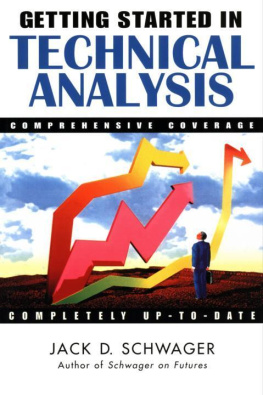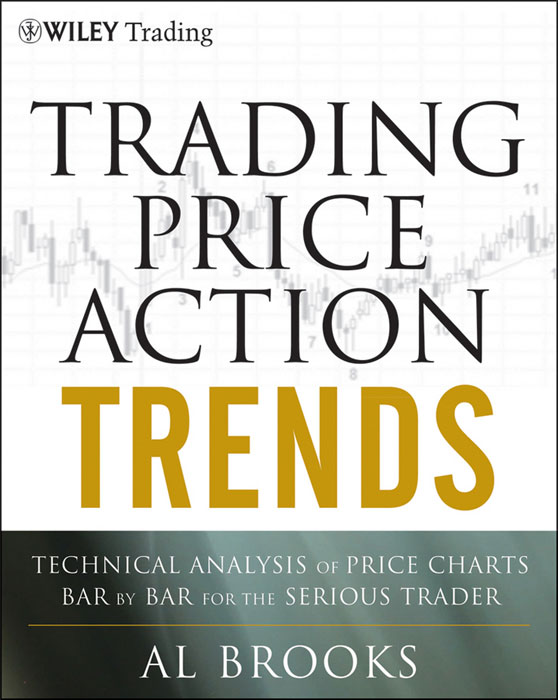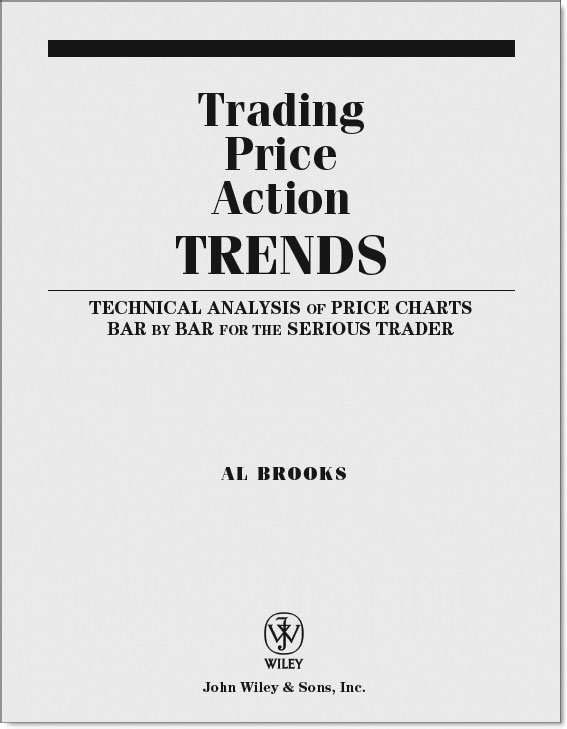Founded in 1807, John Wiley & Sons is the oldest independent publishing company in the United States. With offices in North America, Europe, Australia, and Asia, Wiley is globally committed to developing and marketing print and electronic products and services for our customers professional and personal knowledge and understanding.
The Wiley Trading series features books by traders who have survived the markets ever changing temperament and have prosperedsome by reinventing systems, others by getting back to basics. Whether a novice trader, professional, or somewhere in-between, these books will provide the advice and strategies needed to prosper today and well into the future.
For a list of available titles, please visit our Web site at www.WileyFinance.com .
Copyright 2012 by Al Brooks. All rights reserved.
The first edition of this book, titled Reading Price Charts Bar by Bar: The Technical Analysis of Price Action for the Serious Trader , was published in 2009.
Published by John Wiley & Sons, Inc., Hoboken, New Jersey.
Published simultaneously in Canada.
All charts were created with TradeStation. TradeStation Technologies, Inc. All rights reserved.
No part of this publication may be reproduced, stored in a retrieval system, or transmitted in any form or by any means, electronic, mechanical, photocopying, recording, scanning, or otherwise, except as permitted under Section 107 or 108 of the 1976 United States Copyright Act, without either the prior written permission of the Publisher, or authorization through payment of the appropriate per-copy fee to the Copyright Clearance Center, Inc., 222 Rosewood Drive, Danvers, MA 01923, (978) 750-8400, fax (978) 646-8600, or on the Web at www.copyright.com . Requests to the Publisher for permission should be addressed to the Permissions Department, John Wiley & Sons, Inc., 111 River Street, Hoboken, NJ 07030, (201) 748-6011, fax (201) 748-6008, or online at http://www.wiley.com/go/permissions .
Limit of Liability/Disclaimer of Warranty: While the publisher and author have used their best efforts in preparing this book, they make no representations or warranties with respect to the accuracy or completeness of the contents of this book and specifically disclaim any implied warranties of merchantability or fitness for a particular purpose. No warranty may be created or extended by sales representatives or written sales materials. The advice and strategies contained herein may not be suitable for your situation. You should consult with a professional where appropriate. Neither the publisher nor author shall be liable for any loss of profit or any other commercial damages, including but not limited to special, incidental, consequential, or other damages.
For general information on our other products and services or for technical support, please contact our Customer Care Department within the United States at (800) 762-2974, outside the United States at (317) 572-3993 or fax (317) 572-4002.
Wiley also publishes its books in a variety of electronic formats. Some content that appears in print may not be available in electronic books. For more information about Wiley products, visit our web site at www.wiley.com .
Library of Congress Cataloging-in-Publication Data:
Brooks, Al, 1952
Trading price action trends : technical analysis of price charts bar by bar for the serious trader / Al Brooks.
p. cm. (The Wiley trading series)
The first edition of this book titled, Reading price charts bar by bar : the technical analysis of price action for the serious trader, was published in 2009T.p. verso.
Includes index.
ISBN 978-1-118-06651-5 (cloth); ISBN 978-1-118-16623-9 (ebk);
ISBN 978-1-118-16624-6 (ebk); ISBN 978-1-118-16625-3 (ebk)
1. StocksPricesCharts, diagrams, etc. I. Brooks, Al, 1952 Reading price charts bar by bar. II. Title.
HG4638.B765 2012
332.632042dc23
2011029297
I would like to dedicate this book to my wonderfully kind daughter, Tess Brooks, who sees life as filled with opportunities and seeks them out around the world without hesitation. She is a bold, original thinker and a doer, and fills her life with the dreams that the rest of us have but are too afraid to pursue.
Acknowledgments
My primary goal is to present a series of comprehensive books on price action that addresses the greatest concern among readers, which was how difficult my earlier book, Reading Price Charts Bar by Bar , was to read. I am deeply appreciative of all of the constructive comments that readers have provided and those from the participants in my daily live webinars. Many of these comments were incredibly insightful, and I have incorporated them in this current edition. I am also thankful to all of the traders who have been in my live trading room, because they have given me the opportunity to say things repeatedly until I could clearly articulate what I am seeing and doing. They have also asked many questions that have helped me find the words to communicate more effectively, and I have put those words into these books.
I would like to give a special thank-you to Victor Brancale, who spent long hours proofreading the manuscripts and providing hundreds of very helpful edits and suggestions, and to Robert Gjerde, who built and administers my website and has given me candid feedback on the chat room and the website. Finally, I want to thank Ginger Szala, the Group Editorial Director of Futures magazine, for giving me ongoing opportunities to publish articles and speak in webinars, and for regularly giving me very helpful advice on how to become more involved with the trading community.
List of Terms Used in This Book
All of these terms are defined in a practical way to be helpful to traders and not necessarily in the theoretical way often described by technicians.
always in If you have to be in the market at all times, either long or short, this is whatever your current position is (always in long or always in short). If at any time you are forced to decide between initiating a long or a short trade and are confident in your choice, then the market is in always-in mode at that moment. Almost all of these trades require a spike in the direction of the trend before traders will have confidence.
barbwire A trading range of three or more bars that largely overlap and one or more is a doji. It is a type of tight trading range with prominent tails and often relatively large bars.
bar pullback In an upswing, a bar pullback is a bar with a low below the low of the prior bar. In a downswing, it is a bar with a high above that of the prior bar.
bear reversal A change in trend from up to down (a bear trend).
blown account An account that your losses have reduced below the minimum margin requirements set by your broker, and you will not be allowed to place a trade unless you deposit more money.
breakout The high or low of the current bar extends beyond some prior price of significance such as a swing high or low, the high or low of any prior bar, a trend line, or a trend channel.
breakout bar (or bar breakout) A bar that creates a breakout. It is usually a strong trend bar.
breakout mode A setup where a breakout in either direction should have follow-through.
breakout pullback A small pullback of one to about five bars that occurs within a few bars after a breakout. Since you see it as a pullback, you are expecting the breakout to resume and the pullback is a setup for that resumption. If instead you thought that the breakout would fail, you would not use the term pullback and instead would see the pullback as a failed breakout. For example, if there was a five-bar breakout above a bear trend line but you believed that the bear trend would continue, you would be considering shorting this bear flag and not looking to buy a pullback immediately after it broke out to the downside.







